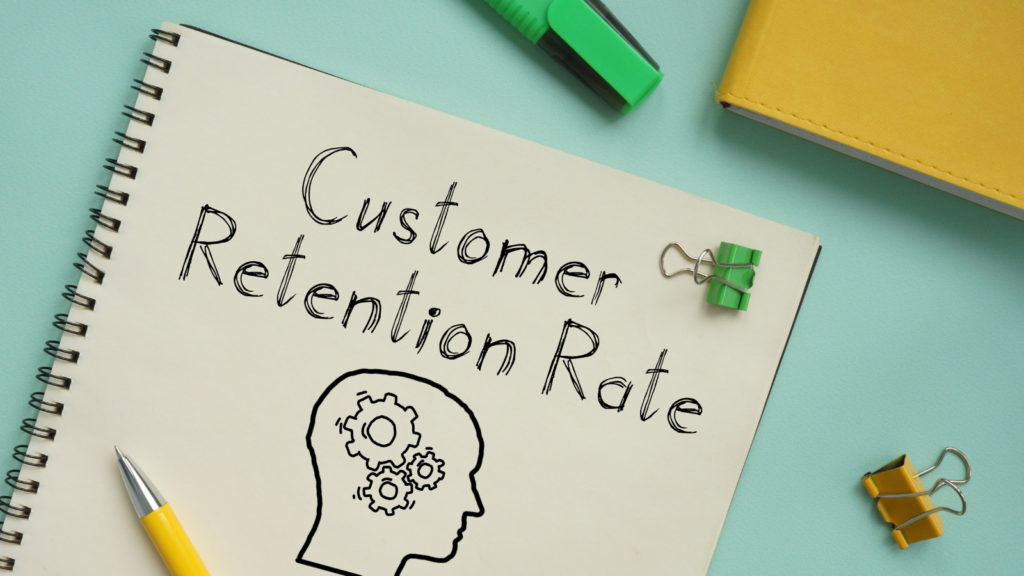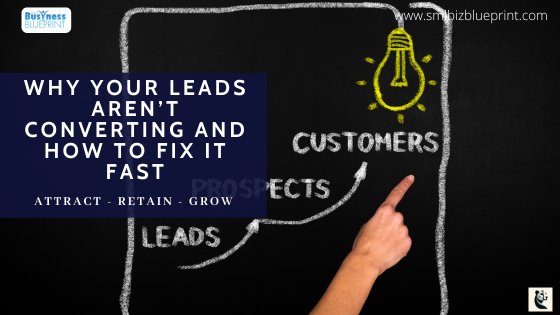Are you struggling to determine why your leads aren’t converting into sales? You’re not alone.
A staggering 79% of marketing leads never turn into paying customers, leaving businesses wondering where they went wrong.
Low conversion rates often result from several overlooked factors that could easily be fixed.
This guide will discuss why your leads aren’t converting and provide proven strategies for optimising your sales funnel and boosting conversions.
This post will provide actionable solutions for turning more of your prospects into loyal customers, from understanding the common mistakes in lead nurturing to implementing effective sales funnel optimization techniques.
Whether refining your lead qualification process, improving follow-up practices, or tracking the right metrics, these strategies will empower your business to achieve better results.

#1 Why Leads Don’t Convert: Understanding the Common Mistakes
One of the most frustrating challenges for businesses is when leads show initial interest but fail to convert into sales.
The reasons behind this issue are often more complex than they appear, and identifying the root causes is essential to improving your conversion rates.
Misaligned Targeting
The first mistake many businesses make is attracting the wrong audience. If your messaging and targeting aren’t aligned with the needs and desires of your ideal customer, you’re likely to bring in leads who won’t convert.
For example, if your product or service caters to premium buyers but your marketing is focused on cost-conscious consumers, you’ll end up with many unqualified leads that simply don’t fit.
Weak Lead Nurturing
Failure to nurture your leads can result in lost opportunities even when you have the right audience. Many leads need time and additional information to make a purchase decision.
Those leads may lose interest or forget about your offering without consistent engagement and value-driven communication.
Implementing a lead nurturing strategy that includes follow-up emails, personalised content, and consistent touchpoints can keep potential customers engaged.
Inadequate Follow-up
Timing is everything when it comes to lead conversion. Leads that don’t receive a timely follow-up often go cold.
Research shows that 44% of salespeople give up after one follow-up, yet 80% of sales require at least five follow-up interactions.
If your sales team isn’t consistently following up with leads, you’re missing out on a significant portion of potential conversions.
Irrelevant or Confusing Messaging
Another common mistake is unclear or irrelevant messaging. If the value proposition is not immediately apparent or if the messaging doesn’t address the lead’s specific pain points, they’re unlikely to move forward.
Your content and communication should highlight how your product solves their problems, why it’s worth their investment, and how it stands out from competitors.
A study by HubSpot found that 63% of companies say their biggest challenge is generating traffic and leads, yet more than 40% of those leads are never followed up with.
#2 How to Improve Lead Conversion Rates with Proven Strategies
Improving lead conversion rates requires more than just bringing in traffic—it’s about implementing the right strategies to engage, qualify, and move leads through your funnel effectively.
Here are some proven techniques to help you turn more of your leads into paying customers.
Refine Lead Segmentation
One of the most effective ways to improve conversions is to refine your lead segmentation. This involves categorising leads based on their behaviours, interests, and level of engagement with your brand.
By segmenting your leads, you can tailor your messaging and offers to match their specific needs, increasing the likelihood that they’ll move further along the funnel.
For example, a high-intent lead ready to purchase will respond better to a direct call-to-action, while an early-stage lead might need more educational content.
Personalization is Key
Today’s customers expect personalised experiences. Personalising your emails, landing pages, and follow-ups can make a huge difference in engagement.
For example, including a lead’s name, referencing their recent activity, or offering customised product recommendations can increase their likelihood to convert.
Personalised CTAs have been shown to perform 202% better than generic ones. Personalisation builds trust and demonstrates that you understand the lead’s needs.
Shift to a Customer-Centric Approach
Many businesses focus too heavily on their product’s features, but customers are more interested in how your product or service can solve their problems.
Shifting your approach to focus on customer pain points and the benefits of your solution will resonate more with leads.
For instance, instead of saying, “Our software has advanced analytics,” try, “Our software helps you make data-driven decisions that increase revenue.” This subtle change in focus can significantly impact how leads perceive your offering.
Offer Value at Every Stage
Leads are more likely to convert if they consistently see value in your content and communication.
Provide actionable insights, free tools, or exclusive access to resources that help them along their buyer’s journey.
Each touchpoint should offer something valuable that nudges them closer to making a decision, whether it’s a free guide, a webinar, or a case study.
Research shows that 65% of B2B buyers say a well-structured and informative content experience has a significant impact on their decision to buy from a provider.
#3 Optimizing Your Sales Funnel to Convert More Leads
A well-optimized sales funnel is key to consistently converting leads. Every stage of the funnel—from awareness to decision—needs to be designed to guide leads smoothly toward a purchase.
Identifying bottlenecks and improving each step can dramatically increase your conversion rates.
Identify Drop-off Points
To optimise your sales funnel, the first step is to identify where leads are dropping off.
This can often be seen through tools like Google Analytics or your CRM, which will show you where engagement wanes. Common drop-off points include confusing landing pages, ineffective CTAs, or gaps in your nurturing process.
Once you know where the issue lies, you can take steps to improve it.
Optimise Your Mid-Funnel
Many businesses focus heavily on the top and bottom of the funnel, neglecting the middle, where leads often drop out.
The mid-funnel is where leads need nurturing through educational content, case studies, and product demos.
Providing resources that help leads evaluate your offering and compare it to competitors can help move them to the next stage.
This is where high-value content like white papers, webinars, or video tutorials can significantly impact.
Refine Your CTAs
Clear, engaging CTAs are essential at every stage of the funnel.
CTAs like “Learn More” or “Download Free Guide” may work well in the awareness stage.
As leads move further down the funnel, you can use more direct CTAs like “Get a Free Quote” or “Schedule a Demo.”
These prompts must align with where the lead is in their buyer journey to keep them from pushing them too fast or losing them due to lack of engagement.
Remove Friction
Reduce friction points, such as too many form fields or complex checkout processes, to simplify your lead’s experience.
Streamline interactions at each funnel stage to make the path to conversion as easy as possible.
For example, if leads drop off after visiting a product page, ensure the page is optimised for clarity and ease of navigation.
A report by MarketingSherpa found that 68% of B2B companies have not identified their sales funnel, yet businesses that implement structured sales funnel optimisation can see a 50% increase in conversion rates.

#4 Lead Nurturing Techniques: The Key to Boosting Conversions
Lead nurturing is the process of building relationships with potential customers at every stage of their journey. Without proper nurturing, even the most promising leads can go cold.
The key to boosting conversions is implementing effective lead nurturing techniques that keep your leads engaged and moving toward a purchase.
Multi-Channel Nurturing
Relying on just one communication channel isn’t enough to nurture leads effectively.
A successful lead nurturing strategy uses a combination of email, social media, retargeting ads, and even phone calls to engage prospects across different platforms.
This multi-channel approach ensures that your brand stays top-of-mind no matter where your leads spend their time.
For example, you might start by sending a follow-up email after a lead downloads a resource and later retarget them with a personalised ad based on their website activity.
Timely Follow-Ups
Timing plays a crucial role in lead nurturing. Leads that receive timely follow-ups are far more likely to convert than those left waiting for days.
Implementing automated systems that trigger follow-ups after key actions—such as downloading an eBook or attending a webinar—can ensure that no lead slips through the cracks.
Companies that contact potential customers within an hour of receiving an inquiry are 7x more likely to qualify a lead, which shows the importance of speed in the nurturing process.
Provide Value in Every Interaction
Every interaction with a lead should offer value. Whether you share educational content, offer solutions to their specific pain points, or provide exclusive access to helpful tools, the goal is to position yourself as a trusted resource.
For instance, you could send a case study demonstrating how your product solved a similar issue for another customer.
The more value you provide, the more likely leads will engage and eventually convert.
Personalised Content
Tailoring your content to the lead’s behaviour and preferences can significantly impact nurturing success.
Personalised emails that mention a lead’s recent interactions with your brand or offer content relevant to their industry can increase engagement and drive conversions.
Research shows that personalised emails deliver 6x higher transaction rates than generic ones.
According to Demand Gen Report, 67% of B2B marketers say that lead nurturing programs have helped them increase sales opportunities by at least 10%.
#5 The Importance of Lead Qualification in Fixing Low Conversion Rates
Lead qualification is one of the most critical components of improving conversion rates.
If you spend time and resources on leads that aren’t a good fit for your product or service, your conversion rate will suffer.
Correctly qualifying leads ensures that you’re focusing your efforts on those who are most likely to convert.
Lead Scoring for Prioritization
A structured lead scoring system helps you rank your leads based on their likelihood to convert.
By assigning points to each lead based on criteria such as their behaviour, demographic information, and engagement with your brand, you can prioritise high-quality leads and focus your efforts where they matter most.
For example, a lead who visits your pricing page multiple times and downloads a product brochure would score higher than one who only subscribes to your newsletter.
This system ensures that your sales team spends their time on leads who are more likely to buy.
Ask the Right Qualifying Questions
Early in the process, it’s crucial to ask qualifying questions that help you determine whether the lead has a genuine need for your product, the authority to make a purchase, and the budget to afford it.
Questions like “What challenges are you facing in your current process?” or “What’s your timeline for making a decision?” can give you insights into their buying intent.
Asking the right questions early helps qualify the lead and sets the tone for a more focused sales conversation.
Quality Over Quantity
Many businesses focus on generating as many leads as possible, but quantity isn’t always better. Chasing unqualified leads can be a drain on resources.
Focusing on fewer, high-quality leads that are well-suited for your product or service is far more effective.
Streamlining lead generation and focusing on quality will ensure that your sales team can engage in meaningful conversations and close deals faster.
Using Data to Refine Your Process
Data is your best friend when it comes to lead qualification. By analysing historical data on past conversions, you can identify common characteristics of leads that converted successfully and apply these criteria to future leads.
Continually refining your lead scoring and qualification process based on real data helps ensure your sales pipeline is filled with the right prospects.
Research shows that businesses that use lead scoring experience a 28% higher conversion rate compared to those that don’t prioritise lead qualification.
#6 Best Follow-Up Practices to Increase Lead Conversion
Following up with leads is a crucial step in the conversion process, but it’s often where many businesses fall short. Effective follow-up practices can significantly improve your chances of converting leads into customers.
Here’s how to optimise your follow-up efforts to maximise conversions.
Personalised Follow-Up Messages
One-size-fits-all follow-ups rarely work. Personalised follow-up messages are far more effective, tailored to a lead’s specific needs and previous interactions with your brand.
Whether through email, phone calls, or social media, personalization builds trust and shows that you’ve paid attention to the individual’s journey.
For instance, referencing a lead’s recent download of a whitepaper or their participation in a webinar adds relevance to your communication.
Personalised emails have been shown to improve response rates by 14% and conversion rates by 10%.
Follow Up Quickly
Timing is everything when it comes to follow-up. Studies show that the faster you respond to a lead inquiry, the higher your chances of converting them.
In fact, leads contacted within an hour of their inquiry are seven times more likely to become qualified prospects than those contacted later.
Automation tools can help you send instant follow-ups triggered by specific lead actions, ensuring no lead goes unattended.
Consistency is Key
Many businesses give up too soon. Converting a lead often requires multiple touchpoints, so a consistent follow-up strategy is critical.
Don’t rely on just one email or phone call—plan for a series of follow-ups spaced out over time.
A typical sequence might include an initial follow-up within a day, a second email 2-3 days later, and additional check-ins over the next few weeks.
The key is to keep the communication valuable and relevant without being too pushy.
Provide Value in Every Follow-Up
Your follow-ups should provide value, not just serve as reminders to buy. Instead of simply asking if they’re ready to purchase, offer something helpful at each touchpoint.
This could be a case study, a product demo, or a personalised offer.
Providing helpful information helps keep the conversation going and moves the lead closer to making a decision.
According to InsideSales.com, 80% of sales require at least five follow-up interactions after the initial contact, but 44% of salespeople give up after just one follow-up.

#7 Tracking Conversion Rate Metrics
You must understand how to track and analyse the right metrics to improve your lead conversion rates.
Monitoring key performance indicators (KPIs) throughout your sales funnel can help you identify weak points, optimise your strategy, and increase conversions.
Here’s what you need to know about tracking conversion rate metrics effectively.
Monitor Conversion Rate
Your overall conversion rate is one of the most important metrics to track. It tells you the percentage of leads that move from one stage of the funnel to the next.
By understanding your conversion rates at different stages—whether from visitor to lead, lead to qualified lead, or qualified lead to sale—you can pinpoint where leads are dropping off and address the issues.
For example, if you have a high number of website visitors but a low visitor-to-lead conversion rate, your lead capture forms or landing pages may need improvement.
Cost Per Conversion
Cost per conversion (CPC) is another critical metric that reveals how much you spend to convert a lead into a paying customer.
A high CPC indicates inefficiencies in your marketing or sales funnel, suggesting you need to optimise your ads, landing pages, or lead nurturing efforts.
Tracking CPC helps ensure that your marketing budget is being spent wisely and that you’re maximising return on investment (ROI).
Lead-to-Close Ratio
The lead-to-close ratio is the percentage of leads that ultimately become paying customers. This metric is vital for evaluating the effectiveness of your sales team and lead nurturing strategies.
A low lead-to-close ratio could signal issues such as unqualified leads being passed to sales or poor follow-up practices.
By analysing this ratio, you can focus on improving lead qualification, follow-up timing, and nurturing efforts to close more deals.
Customer Acquisition Cost (CAC)
Your customer acquisition cost measures how much you spend acquiring a single customer.
This includes all sales and marketing costs divided by the number of new customers acquired during a specific period.
A rising CAC might suggest inefficiencies in your funnel or lead nurturing process, while a stable or decreasing CAC indicates that your efforts are working well.
Lowering your CAC while maintaining or increasing lead conversion is a major goal for any business looking to scale profitably.
Use Data to Drive Improvements
By regularly analysing these metrics, you’ll gain valuable insights into where your funnel is performing well and where improvements are needed.
For example, if your data shows a strong lead-to-sale conversion rate but a high cost per conversion, you should focus on reducing marketing spend or improving lead quality.
Conversely, if your visitor-to-lead conversion rate is low, consider optimising your website’s landing pages, forms, or CTAs.
According to Salesforce, 79% of marketing leads never convert to sales, highlighting the importance of tracking and optimising your conversion rate metrics to improve overall performance.
Conclusion
Many businesses face the challenge of converting leads into paying customers, but understanding why your leads aren’t converting and implementing strategies to fix it can dramatically improve your results.
Addressing common mistakes such as misaligned targeting, weak lead nurturing, and inadequate follow-ups can optimize your sales funnel and immediately improve conversion rates.
Start by refining your lead segmentation and personalising your interactions to create a more customer-centric approach.
Focus on nurturing leads through valuable content and timely follow-ups while optimising your funnel to remove friction and ensure smooth progression through each stage.
Lead qualification is key—prioritise high-quality leads to maximise your team’s efficiency.
Lastly, track essential conversion metrics like conversion rate, cost per conversion, and lead-to-close ratio to optimise your process and boost sales continuously.
Now that you have the insights and strategies to improve your lead conversions, it’s time to take action.
Evaluate your current lead conversion process, identify areas for improvement, and start implementing these tactics to drive better results.
Ready to boost your conversion rates and turn more leads into loyal customers?
Download our free Lead Conversion Optimization Checklist to get started today!
FAQs
Q1: What are the most common reasons why leads don’t convert?
A1: The most common reasons include misaligned targeting, weak lead nurturing, inadequate follow-up practices, and unclear or irrelevant messaging. Addressing these areas can significantly improve your lead conversion rates.
Q2: How can I improve my lead conversion rate?
A2: To improve lead conversion, focus on refining your lead segmentation, personalising your interactions, optimising your sales funnel, and ensuring you qualify high-quality leads. Additionally, nurturing leads through timely and valuable follow-ups will keep them engaged and move them closer to a purchase.
Q3: What is the best way to track conversion rates?
A3: Use tools like Google Analytics, CRM software, or dedicated marketing platforms to monitor your conversion rate at different stages of the funnel. Track metrics such as visitor-to-lead conversions, lead-to-close ratio, and cost per conversion to get a clear picture of your performance.
Q4: How many follow-ups should I send to a lead?
A4: On average, it takes five to seven follow-ups to convert a lead into a customer. Consistency is key—space your follow-ups strategically, ensuring each one provides value to the lead without being overly aggressive.
Q5: Why is lead qualification so important?
A5: Lead qualification ensures that you’re focusing your efforts on prospects most likely to convert. By prioritising high-quality leads and weeding out those who don’t fit your criteria, you can improve sales efficiency and increase conversion rates.
Q6: How can I lower my customer acquisition cost (CAC)?
A6: You can lower your CAC by improving the efficiency of your sales funnel, optimising your marketing spend, and focusing on better lead qualification and nurturing. Automating parts of your marketing and sales process can also reduce overhead and streamline operations.
Q7: What metrics should I track to improve lead conversion?
A7: Key metrics to track include your overall conversion rate, cost per conversion (CPC), lead-to-close ratio, and customer acquisition cost (CAC). These metrics will help you identify weak points in your funnel and measure the effectiveness of your optimisation efforts.
Other Articles
10 Proven Customer Retention Strategies for Small Businesses
5 Reasons Your Business Growth Plateaued and How to Fix It
How Smart Companies Stand Out: 5 Proven Differentiation Strategies




